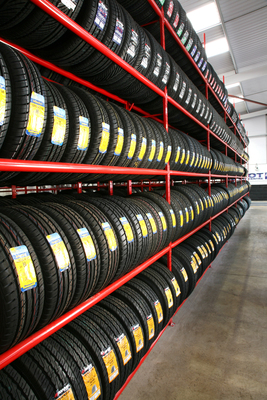All Categories
Featured
Table of Contents
The Michelin used a comfy driving experience, qualified by responsive guiding and a modern understeer balance. Regardless of the cooler screening conditions, Michelin's constant time and grip over three laps indicates its viability for real-world applications. On the other hand, Yokohama's performance was distinctive. While its super-quick steering caused a fast front axle turn, the back showed a tendency to swing a lot more.
The tyre's first lap was a second slower than the second, aiming to a temperature-related hold rise. For everyday usage, the Michelin could be a more secure bet.
Top Tyre Offers Near Me
It shared Michelin's secure understeer balance but did not have the latter's readiness to turn. Continental and Goodyear's performances were remarkable, with Continental's brand-new PremiumContact 7 revealing a substantial enhancement in wet conditions contrasted to its precursor, the PC6. This model was much much less conscious fill changes and behaved just like the Michelin, albeit with slightly much less communication at the restriction.
It incorporated the safe understeer equilibrium of the Michelin and Continental with some sporty handling, proving both foreseeable and quick. As an all-rounder for this Golf GTI, Goodyear's Asymmetric range was the standout, showing remarkable performance in the damp. The Bridgestone Potenza Sporting activity took the crown as the fastest tire, albeit by a small margin.
Vehicle drivers seeking an amazing damp drive may find this tire worth considering. The standout entertainer in damp braking was the most recent tyre on examination, the PremiumContact 7, though the outcomes are nuanced.
Best High-quality Tyres
Ideally, we wanted the cold temperature examination to be at around 5-7C, but logistical hold-ups suggested we checked with a typical air temperature level of 8C and water at 12C. While this was cooler than basic examination conditions, it was still warmer than real-world problems. The warm temperature level test was done at an average of 18C air and 19C water.
The 3rd run included wet braking tests on worn tyres, specifically those machined to 2mm with a little confrontation. While we planned to do more with these used tires, weather constraints limited our screening. Nevertheless, it's worth keeping in mind that damp braking is most important at the used state, as tires typically boost in completely dry conditions as they wear.
Nonetheless, it shared one of the most substantial performance drop, alongside the Yokohama, when put on. Bridgestone, Goodyear, and Michelin saw the least performance decrease when put on. Bridgestone and Goodyear's efficiency dipped in cooler conditions. The Hankook tyre registered the tiniest performance decline as temperatures cooled, however it was among one of the most affected when put on.
Trusted Car Tyres Near Me
The take-home message here is that no single tire mastered all facets of wet stopping, showing an intricate interplay of variables influencing tire efficiency under various conditions. There was a standout tire in aquaplaning, the Continental ended up top in both straight and curved aquaplaning, with the Michelin and Goodyear likewise really good in much deeper water.

Yokohama can profit from slightly more hold, a problem possibly affected by the colder conditions. As for dealing with, all tires done within a 2% array on the lap, showing their premium performance (Tyre shop). Thinking about these tyres basically target the same client, it's interesting to observe the significant differences in feel.
The surprise is due to the fact that the PremiumContact 6 was just one of my favourites for stylish dry drives, but its successor, the PremiumContact 7, seems elder and appears like Michelin's performance. Amongst these, Hankook was the least exact in guiding and communication at the limit. Tyre balancing. Both Michelin and Continental used beautiful first guiding, albeit not the fastest
If I were to advise a tyre for a rapid lap to a newbie, state my father, it would certainly be among these. We have the 'fun' tyres, namely Yokohama and Bridgestone. Both were quick to guide and really felt sportier than the others, but the compromise is a much more playful rear end, making them extra difficult to manage.
Honest Cheap Car Tyres
It provided comparable guiding to Bridgestone yet supplied better responses at the limitation and better grip. The Bridgestone Potenza Sporting activity, nevertheless, appeared to deteriorate fairly swiftly after just three laps on this requiring circuit. There's Goodyear, which positioned itself someplace in between the enjoyable tires and those often tending towards understeer.
All in all, these tyres are exceptional entertainers. In terms of tire wear, the method used in this examination is what the industry refers to as the 'gold requirement' of wear.
Both the Bridgestone and Yokohama tires dramatically underperformed in contrast to the other four tires in terms of rolling resistance, with Continental slightly surpassing the remainder. Concerning the comfort level of the tires, as expected, many demonstrated an inverse connection with handling. The Continental, Michelin, and Goodyear tyres done best throughout numerous surface area types tested.

Bridgestone started to show signs of firmness, while Yokohama was specifically disconcerting over pockets. We did measure internal noise levels; however, as is often the instance, the results were closely matched, and due to weather restrictions, we were not able to carry out a subjective analysis of the tires noise. Finally, we took a look at abrasion figures, which determine the quantity of tyre step lost per kilometre, normalised to a one-tonne car.
Leading Car Tyre Fitting – Caversham WA
This number represents the amount of rubber dust your tires generate while driving. Michelin led in this classification, generating over 9% less rubber particulate matter. On the various other hand, Hankook produced 32% even more. This is an aspect I think the industry should concentrate on more in the future, and it's something Michelin is supporting.
Latest Posts
Top Cheap Tyres Near Me ([:suburb])
Honest Tyre Installation – Stirling
Best Tyre Shop Near Me